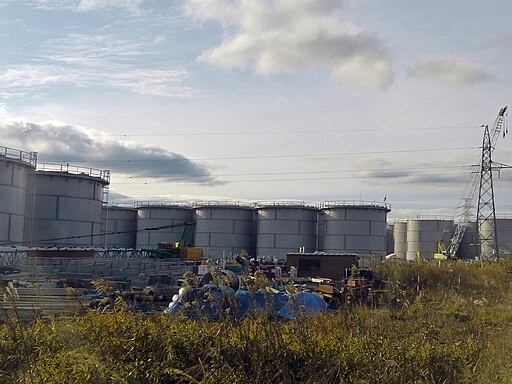In 2011, the Fukushima Daiichi Nuclear Power Station was struck by a massive tsunami following a magnitude 9.1 earthquake that hit the northeast coast of Honshu, Japan. The plant's defensive sea wall built to protect it from such an onslaught was not enough to stop the huge waves. As the facility got flooded, partial meltdowns occurred that led to the explosions of some of the reactors. This event is considered one of the worst nuclear accidents in human history.

The Controversial Discharge Plan
This incident damaged the nuclear plant's power supply and cooling systems, so the workers had to pump water into the reactors to keep them cool constantly. Since the reactors still contain hot nuclear fuel, the water becomes irradiated, so it cannot be just flushed away. The used cooling water has been kept in over 1,000 on-site tanks built by Tokyo Electric Power Company (TEPCO).
Currently, there are 1.3 million metric tons of contaminated water, and there is no more space for new tanks. This means the Japanese authority needs to plan a solution for discharging the irradiated water. In 2019, Japan's environment minister Yoshiaki Harada declared that the only solution to this problem is to release the wastewater into the ocean as there might be no other choice. This plan which has been in the works for years, sought approval from the United Nations (U.N.).
On July 4, 2023, the U.N. nuclear agency endorsed Japan's plan to pump treated radioactive water into the Pacific Ocean, with the International Atomic Energy Agency (IAEA) submitting its final plan assessment. The agency believes the proposal meets international standards with negligible environmental and health impact.
The wastewater will undergo several steps before being discharged into the sea, in conformity with international standards. First, the radioactive water will be treated to filter out the harmful elements and analyzed in terms of its remaining radioactivity. It will then be diluted to 1,500 becquerels of tritium per liter of clean water. This diluted water will be released through an underwater tunnel into the Pacific Ocean.
READ ALSO : Greenpeace and Local Fisheries Oppose Plans to Release Nuclear-Contaminated Water Into the Ocean
What are the Risks of Releasing Radioactive Wastewater?
Dangerous elements can be found in the radioactive wastewater, but TEPCO is confident that most can be removed. The real challenge is the presence of radioactive tritium since it cannot be removed, and there is currently no available technology yet to do so.
The Japanese government and the IAEA assure that the contaminated water will be highly diluted and slowly released over the coming decades. This means that the level of tritium to be released in the Pacific Ocean will be lower than the amount allowed in other countries, therefore, meeting international safety and environmental policies. TEPCO and IAEA also argue that tritium occurs naturally in the environment and the human body, so releasing small amounts into the sea is safe.
However, experts have divided opinions regarding this matter. According to the Canadian Nuclear Safety Commission, tritium might not penetrate the skin, but it can increase the risk of cancer when consumed in vast quantities. Another concern is that tritium can act like a pollutant that will pass through different levels of the food chain. Kewalo Marine Laboratory Director Robert H. Richmond added that the world's oceans are already suffering from stress due to ocean acidification, climate change, pollution, and overfishing, so it must not be treated like a dumping ground.
RELATED ARTICLE : Deep Isolation Has Developed a New Technology to Safely Handle Radioactive Waste From Nuclear Power Plants
Check out more news and information on Nuclear Waste in Science Times.
© 2025 ScienceTimes.com All rights reserved. Do not reproduce without permission. The window to the world of Science Times.












